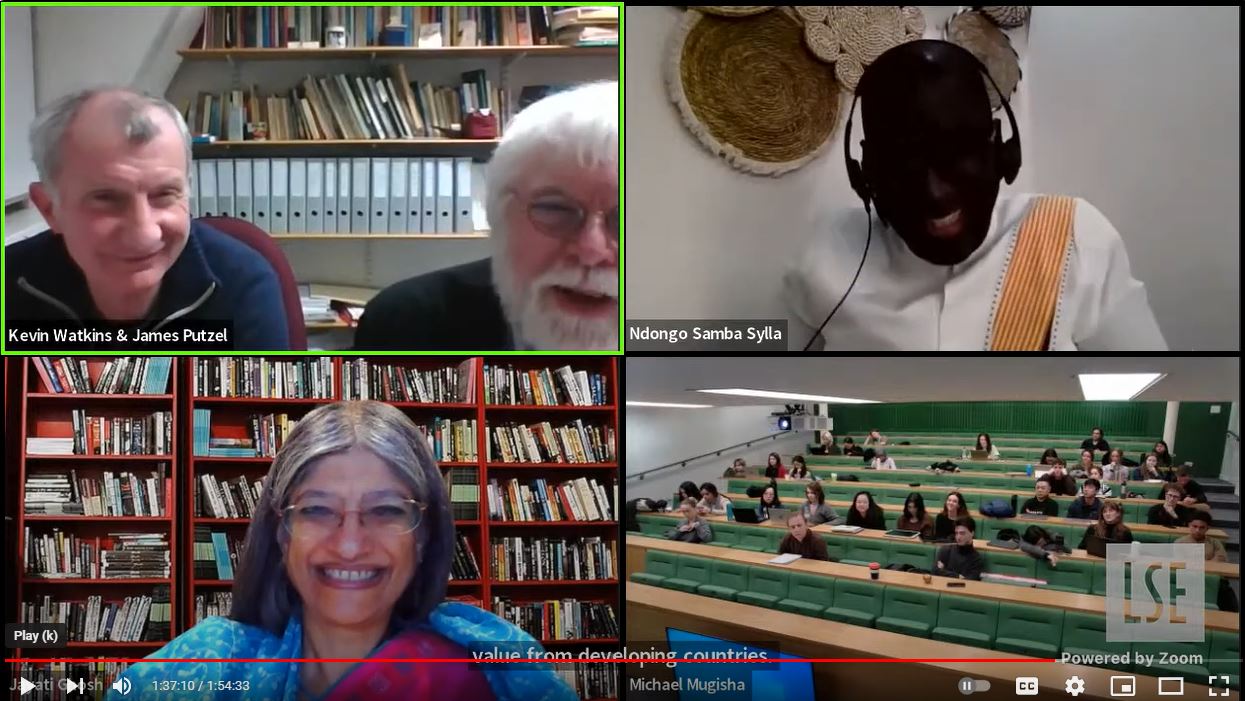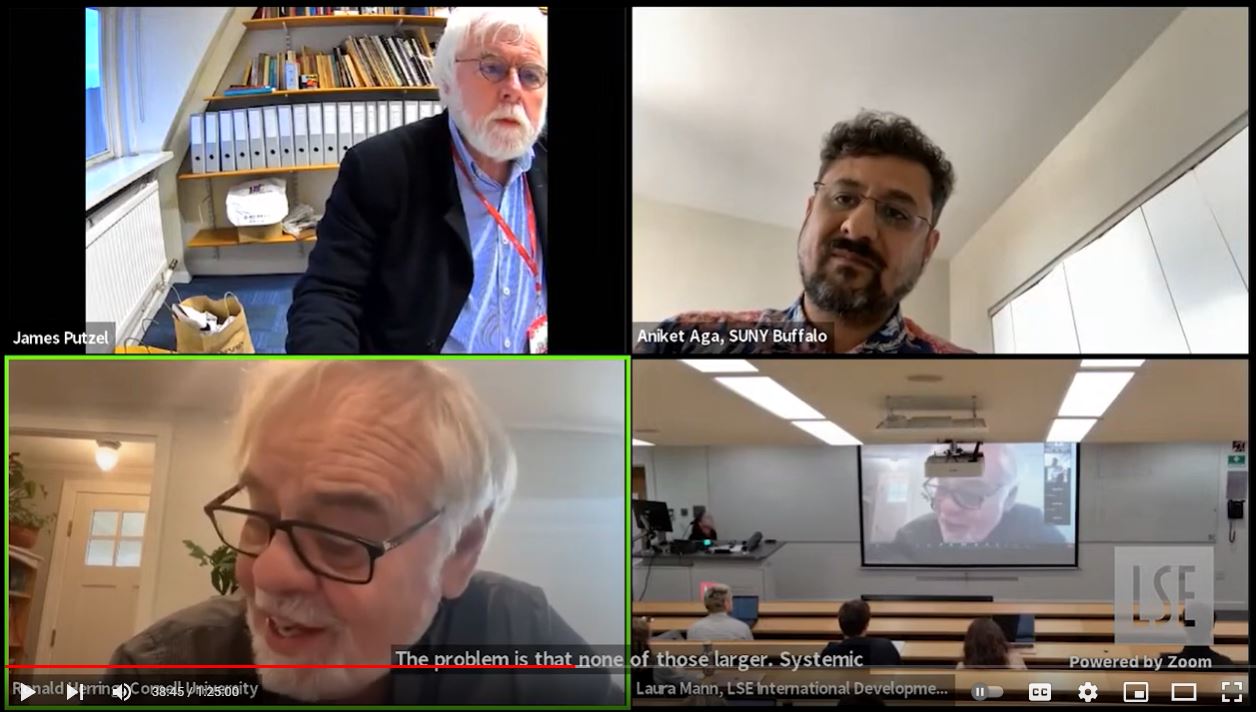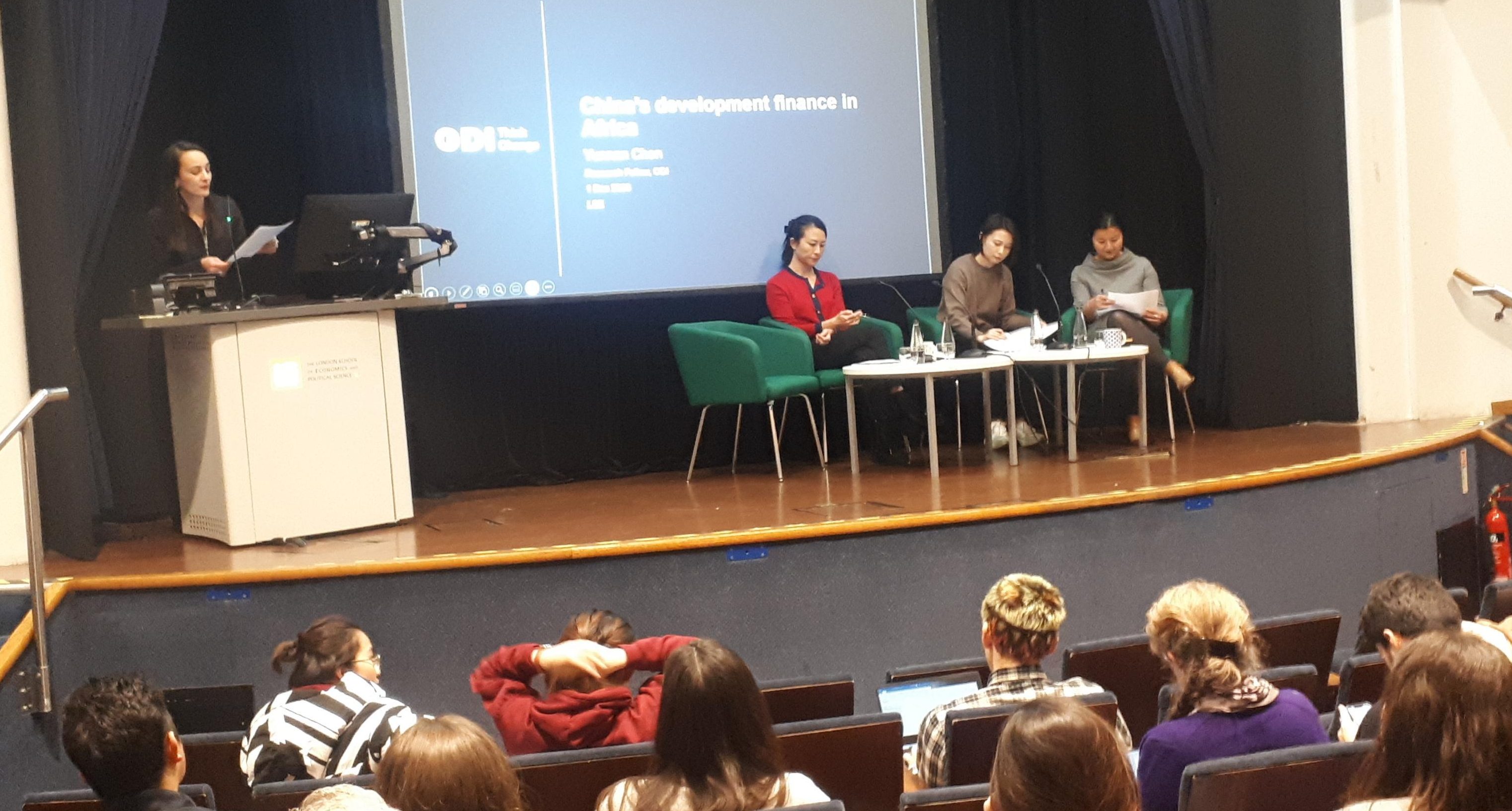On Friday 10 November, Mushtaq Khan and Pallavi Roy gave a lecture entitled ‘Making Anti-Corruption Real: A strategy for feasible reform in adverse contexts’ as part of the Cutting Edge Issues in Development Lecture Series for 2023/24. The discussant for this lecture was Jonathan Di John. Read what MSc students Rewa El Masry and Naomi Leon took away from the lecture below.
You can watch the lecture back on YouTube or listen to the podcast.
How can queue discipline be consistently reinforced, and what influences individuals to adhere to or disregard queue norms? What factors contribute to variations in the presence of queues within the same country? Why do I queue in one country and skip it in another? Those questions were asked as part of a lecture on anti-corruption by Mushtaq Khan and Pallavi Roy. The idea is that even such small actions influence citizens’ behaviour, and reflect the extent of the rule of law in a particular country. Bringing in the above example and the rule of law emerges the concept of corruption. Corruption is thus all about the misuse of power, among those who actually have power, to break the rules, benefit themselves and harm society as Mushtaq clearly defines.
Throughout the talk, Mushtaq draws on the different types of corruption all of which I’m quite familiar with coming from Lebanon, a country that ranks highly on the corruption index set forth by Transparency International. Corruption is intertwined, even intersectional one might say, across the public sector, between the political, bureaucratic and policy work and as such, any kind of anti-corruption work should be able to tackle those issues.
Mushtaq created a framework that works on tackling one side of corruption: the policy. The aim of this work is to redesign policy to ensure proper program implementation beyond the clientelist networks. The model itself is quite localized, bringing in positive “anti-corruption” insights from the local community and building “horizontal actors” through incentivizing processes and enabling effective checks and balances.
The theory behind the model is quite interesting – building a horizontal model for anti-corruption, beyond the typical horizontal-vertical enforcement, and taking into account the power dynamics, the capabilities of each actor and their interests. The model is well situated within the feasibility and applicability model with the ability to reduce corruption and its sequential impact on the development programs.
In this regard, the applicability of the framework is intriguing. Pallavi reflected on two case studies where this framework was adopted: climate adaptation in Bangladesh and electricity supply to SMEs in Nigeria. As stated, understanding local successes in those areas and building on it through incentivizing citizens to act can reduce corruption with particular limitations of course.
The framework, however, and in my opinion, fails to reflect the intersectionality, continuum of corruption across the multiple levels of stakeholders and most importantly the scalability issue. One can create so many “horizontal actors” on the microlevel, this does not mean that those actors are enabled or empowered to combat corruption especially if that corruption was so entrenched within the state system. More importantly, this microlevel dynamics, no matter how successful, cannot be translated into the macro and government level without the proper legislative, on one hand, and enhanced citizen behaviour and awareness on the other.
We, as citizens, operate within a social sphere with bounded rationality and our actions reflect this kind of limitation and the social norms surrounding us. Going back to the queue, I’m very unlikely to stand in the queue in Beirut, because I see people skipping it, but would very happily stand in one London as it is the existing norm (and someone might shout in case I did, speaking out of experience of course) – what kind of model/ framework would then be needed to unify my behaviour across all settings?
Rewa El Masry
Will it be possible to eradicate corruption?
As a citizen of Mexico, answering this question is challenging, given that I have observed how corruption is ingrained in society. Corruption in the country is summarized in the famous phrase that many Mexicans, politicians, and bureaucrats use: ‘who does not cheat, does not progress’ (‘quien no tranza, no avanza’ in Spanish). The most common acts of corruption occur when making payments, procedures or requests for public services and other contacts with authorities, having an impact on the public treasury of nearly 475 million dollars, in addition to undermining trust in the public servers.
But returning to the main question, how could corruption in Mexico be resolved? Following the ideas presented in Professor Mushtaq Khan and Dr Pallavi Roy’s talk ‘Making Anti-Corruption Real: A strategy for feasible reform in adverse contexts’, I can summarize three key points.
1. Insufficient Vertical Monitoring:
According to Mushtaq Khan, the lack of horizontal monitoring mechanisms, the presence of political agreements and power distributions between political actors that can favour or hinder corruption, and blind reliance on vertical monitoring explain the ineffectiveness of anti-corruption efforts. This is due to a weak application of the rule of law and a system of checks and balances. Despite the creation of the National Anti-Corruption System (SNA) and the “3de3 Law” (2016) in Mexico, which establishes the obligation of public officials to make public their asset, interest and tax declarations, it has not been possible to prevent or appropriately sanction bureaucrats.
2. A Tutorial to Eradicate Corruption?
Khan proposes two methods to achieve development goals despite corruption: the “voice strategy” that leverages horizontal monitoring based on self-interest, exemplified by corruption between political parties; and the “exit strategy”, used when self-monitoring is not feasible due to deep infiltration in corruption, such as the case of drug trafficking in Mexico. The proposed solution would be to reduce demand-side capabilities, providing competitive services and job opportunities.
3. Additional Recommendation:
Consider that, in addition to the proposed solutions, governments could rely on technology and technological entrepreneurs to eradicate corruption. Technology can increase public trust, facilitate effective and efficient public spending, and improve accountability. In the case of Mexico, I would suggest that the government strengthen civil society, encouraging its participation in political life to improve common areas for its own benefit and that of the community.
In short, fighting corruption is not easy, but it must start somewhere. This change needs to be feasible, sustainable, and supported by relevant actors. In the case of Mexico, strengthening civil society and encouraging its active participation in political life could be a fundamental starting point.
Naomi Leon
The views expressed in this post are those of the author and in no way reflect those of the International Development LSE blog or the London School of Economics and Political Science.





